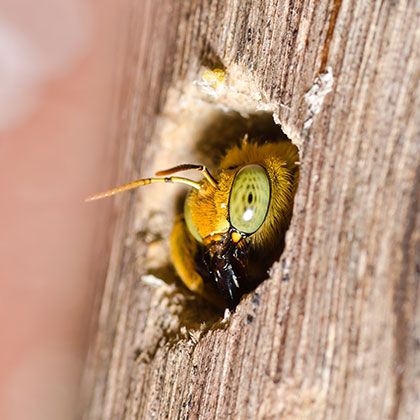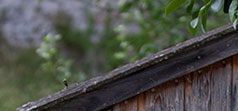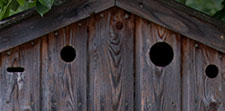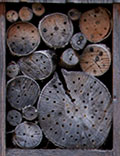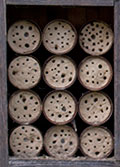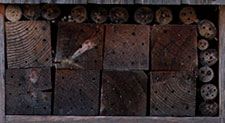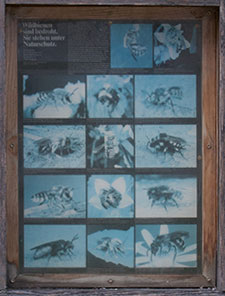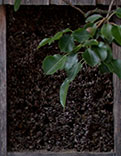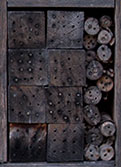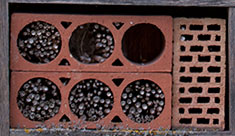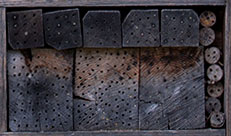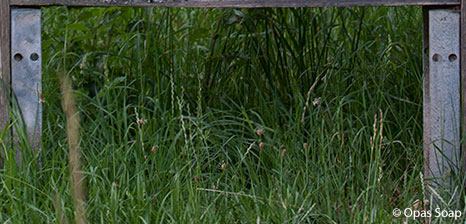Build a Insect Hotel

Building a insect hotel is fun and educational, especially for the kids.
Kids learn about different insects and what types of houses they prefer to live in. In addition, insects need nesting sites so they can lay their eggs and in return they help pollinate our fruit trees and flowers.
For example, the carpenter bee. Carpenter bees are often mistaken for a bumble bee because of their similar appearance.
The carpenter bee is an important pollinator of many open-faced flowers such as the Scarlet globe mallow, california poppy, evening primrose, and the water star grass.
The carpenter bee likes to live in holes in wood logs and dwellings.
Carpenter bees make nests by tunneling into wood. The female is in charge of making the nests. Carpenter bees do not actually eat wood but they use the wood pieces to make walls inside the tunnels of their nest.
Although carpenter bees can cause some trouble if you have a wood house. Instead of fighting them, encourage another place to live and make them a insect hotel in your garden. This way, you'll have a beneficial relationship as the carpenter bee will help pollinate your fruits and vegetables.
See on this page two different types of insect hotels. One triangular and one square insect hotel made slightly different but serve the same purpose. The sizes of the holes inside the wood logs make it easier for insects of various sizes to penetrate through them. The holes signify a potential home for a insect. Once the insect is comfortable, usually the female will start to make a nest. Different types of wood, sticks, and clay are used to host a variety of beneficial insects. Usually the wood used in insect hotels tend to be in the most natural form clear from any chemicals such as staining or paints.
Sticks, and reeds can be collected from a nearby marsh or pond. For bigger collections of these items, see your local forest and park ranger to obtain a a permit for permission to collect. Reeds are abound in areas near waterways or any area where there is water surfacing. Plywood can be purchased at your local lumber store or you can use old wood from a drawer, cabinet, or scraps from an old project.
Wood logs, both circle and square, can also be obtained at your local outdoor home and garden store. If you have nearby wood farmers, you can barter or buy from them. I imagine random logs of wood can be found in your local forest or hills but if a bigger amount is required, you should talk to your local ranger for permission to collect.
Air bricks have holes in them to allow small sticks and reeds to be inserted in them. Air bricks can be found at your local outdoor home and garden store.
Lastly, clay. Clay is added to fill up a hollow aluminum can or hollow wood frames making it easier to plug in sticks and reeds. Clay can also be added under the roof of the insect hotel. Clay plays a special role in a insect hotel as certain insects are attracted to clay and dirt because it's their natural habitat. For example, mud dauber wasps use clay to make their nests.
Roll over the different selection for more info and click to see in detail.
